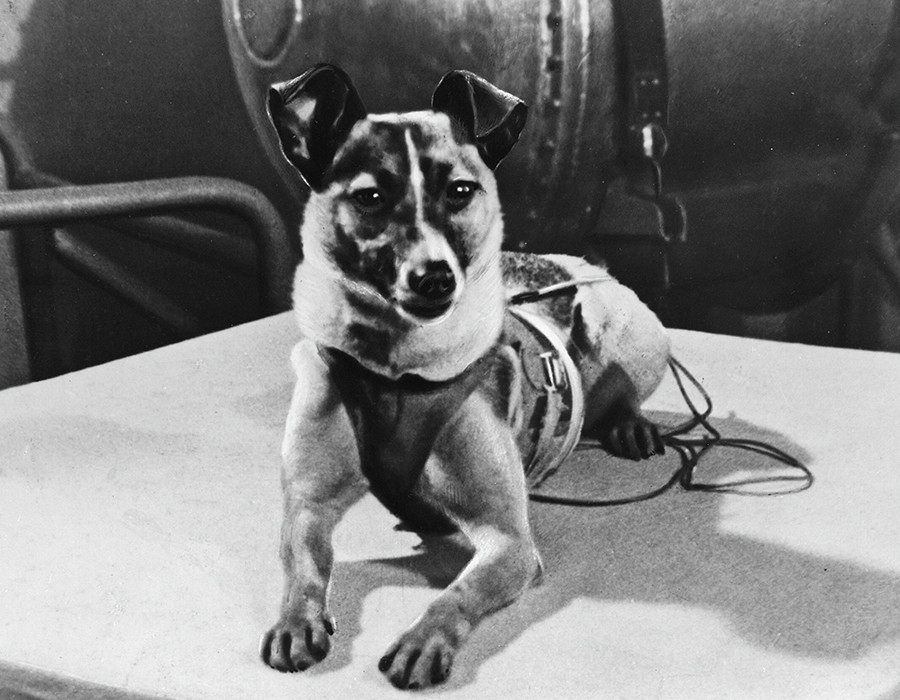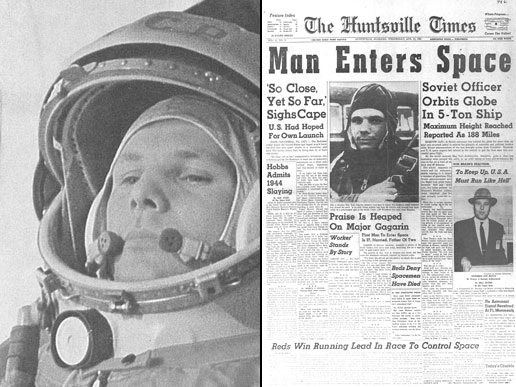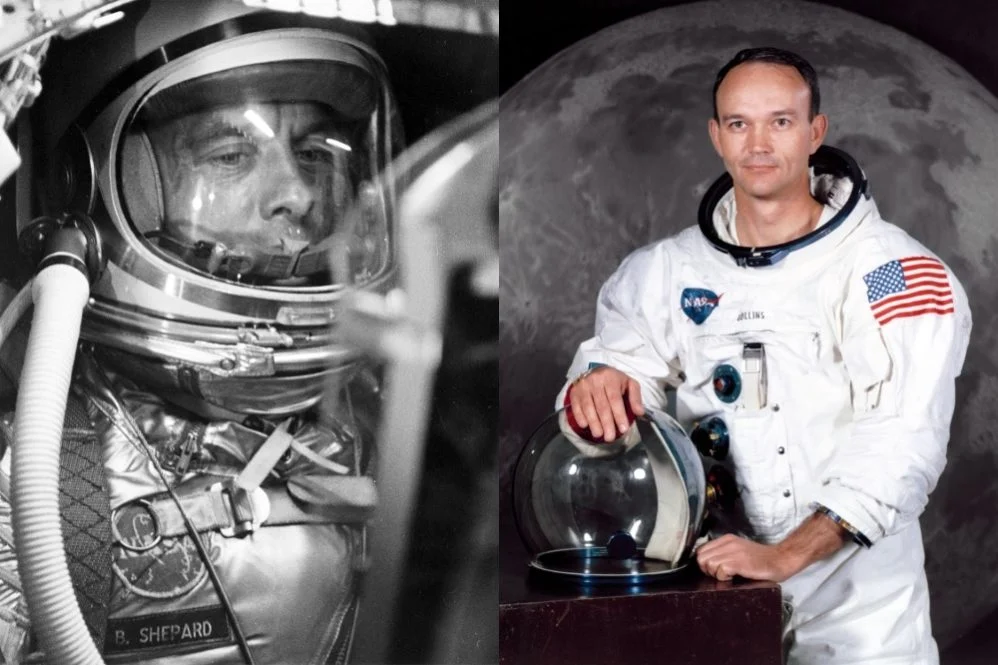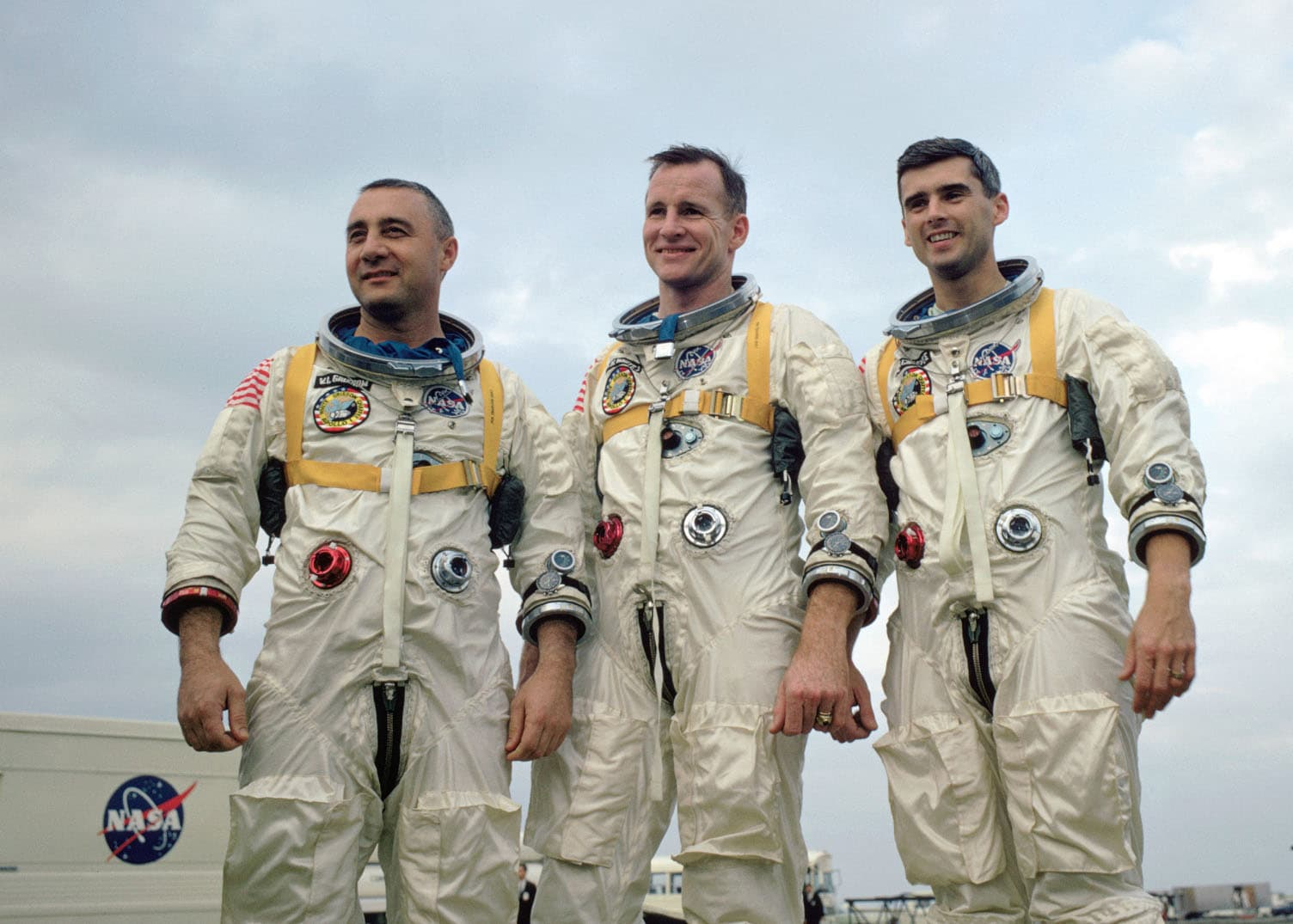What Is The First Spaceship In The World?
 |
| Photo: Wikipedia |
Spaceflight began in the 20th century following theoretical and practical breakthroughs by Konstantin Tsiolkovsky and Robert H. Goddard. The Soviet Union took the lead in the post-war Space Race, launching the first satellite, the first man and the first woman into orbit. The United States caught up with, and then passed, their Soviet rivals during the mid-1960s, landing the first man on the Moon in 1969. In the same period, France, the United Kingdom, Japan and China were concurrently developing more limited launch capabilities.
History of spaceflight
 |
| Laika - The first dog into space © Sputnik |
NASA's first human spaceflight program was Project Mercury. This ambitious undertaking was launched in 1958—about a year after the U.S.S.R. had signified the start of the Space Age with the successful launch of the satellite Sputnik 1.
The Mercury missions began the space race in earnest and drew upon the vast resources of the U.S. government and private sector—an estimated two million Americans contributed.
Testing the limits of the human body in space was an important objective of both space programs. To this end robots and animals were blasted aloft—most notably Mercury's Ham the chimpanzee and the Soviet dog Laika. Though Ham returned to Earth and a comfortable retirement at the National Zoo in Washington, D.C., Laika died aboard Sputnik 2 in 1957.
Yuri Gagarin: First Man in Space
 |
| Photo: NASA |
April 12 was already a huge day in space history twenty years before the launch of the first shuttle mission. On that day in 1961, Russian cosmonaut Yuri Gagarin (left, on the way to the launch pad) became the first human in space, making a 108-minute orbital flight in his Vostok 1 spacecraft. Newspapers like The Huntsville Times (right) trumpeted Gagarin's accomplishment.
Mercury astronaut Alan Shepard became the first American in space less than a month later.
The first cooperative human space flight project between the United States and the Soviet Union took place in 1975. The Apollo-Soyuz Test Project was designed to test the compatibility of rendezvous and docking systems for American and Soviet spacecraft and to open the way for future joint manned flights.
Since 1993, the U.S. and Russia have worked together on a number of other space flight projects. The Space Shuttle began visiting the Russian Mir space station in 1994, and in 1995 Norm Thagard became the first U.S. astronaut to take up residency on Mir. Seven U.S. astronauts served with their Russian counterparts aboard the orbiting Mir laboratory from 1995 to 1998. The experience gained from the Mir cooperative effort, as well as lessons learned, paved the way for the International Space Station.
In-orbit construction on the Station began in November 1998, and it has been staffed non-stop with international crews since November 2000. The first Station crew, made up of U.S. commander Bill Shepherd and cosmonauts Yuri Gidzenko and Sergei Krikalev, was launched on board a Russian Soyuz spacecraft. The crew returned to Earth on the Space Shuttle Discovery in March 2001.
Other successful flights to space
 |
| Photo: Federalist |
About a month later Alan Shepard, Jr. became the first American in space on May 5, 1961, when he was launched aboard Mercury-Redstone 3. His 15-minute flight, dubbed "Freedom 7," was watched by some 45 million television viewers.
Between 1961 and 1963, six manned spacecraft flew as part of the Mercury project. Mercury pilots rode in wingless capsules, which detached from their launch rocket and fell back to Earth. The small craft were designed to withstand the tremendous temperatures of reentering the planet's atmosphere and also survive a dramatic splashdown in the ocean.
Just a few weeks after Shepard's flight, President John F. Kennedy announced his intent to put a man on the moon by the end of the decade. The challenge signaled the birth of NASA's Gemini and Apollo missions.
Yet Mercury had more to accomplish. In February 1962 John Glenn became the first American to orbit the Earth on the Friendship 7 mission.
NASA's Gemini program was designed to refine spacecraft so that they could perform rendezvous, docking, and other advanced maneuvers that would be necessary to land an astronaut on the moon and return to Earth.
As the missions of this era grew longer, astronauts became more adept at living within their spacecraft and even venturing outside it. Soviet cosmonaut Aleksei Leonov became the first person to exit an orbiting spacecraft in March 1965.
1969 Moon Landing
 |
| Apollo 1 Crew The crew included (L-R) Gus Grissom, Ed White and Roger Chaffee. NASA |
On July 20, 1969, American astronauts Neil Armstrong (1930-2012) and Edwin "Buzz" Aldrin (1930-) became the first humans ever to land on the moon. About six-and-a-half hours later, Armstrong became the first person to walk on the moon. As he took his first step, Armstrong famously said, "That's one small step for man, one giant leap for mankind." The Apollo 11 mission occurred eight years after President John F. Kennedy (1917-1963) announced a national goal of landing a man on the moon by the end of the 1960s. Apollo 17, the final manned moon mission, took place in 1972.
President Richard Nixon spoke with Armstrong and Aldrin via a telephone radio transmission shortly after they planted the American flag on the lunar surface. Nixon considered it the "most historic phone call ever made from the White House."
Despite the setback, NASA and its thousands of employees forged ahead, and in October 1968, Apollo 7, the first manned Apollo mission, orbited Earth and successfully tested many of the sophisticated systems needed to conduct a moon journey and landing.
In December of the same year, Apollo 8 took three astronauts to the far side of the moon and back, and in March 1969 Apollo 9 tested the lunar module for the first time while in Earth orbit. That May, the three astronauts of Apollo 10 took the first complete Apollo spacecraft around the moon in a dry run for the scheduled July landing mission.
What is the first spacecraft in the world?
 |
| Photo: NASA |
The Sputnik 1 spacecraft was the first artificial satellite successfully placed in orbit around the Earth and was launched from Baikonur Cosmodrome at Tyuratam (370 km southwest of the small town of Baikonur) in Kazakhstan, then part of the former Soviet Union. The Russian word "Sputnik" means "companion" ("satellite" in the astronomical sense).
In 1885 Konstantin Tsiolkovsky first described in his book, Dreams of Earth and Sky, how such a satellite could be launched into a low altitude orbit. It was the first in a series of four satellites as part of the Sputnik program of the former Soviet Union and was planned as a contribution to the International Geophysical Year (1957-1958). Three of these satellites (Sputnik 1, 2, and 3) reached Earth orbit.
The Sputnik 1 satellite was a 58.0 cm-diameter aluminum sphere that carried four whip-like antennas that were 2.4-2.9 m long. The antennas looked like long "whiskers" pointing to one side. The spacecraft obtained data pertaining to the density of the upper layers of the atmosphere and the propagation of radio signals in the ionosphere. The instruments and electric power sources were housed in a sealed capsule and included transmitters operated at 20.005 and 40.002 MHz (about 15 and 7.5 m in wavelength), the emissions taking place in alternating groups of 0.3 s in duration. The downlink telemetry included data on temperatures inside and on the surface of the sphere.
Since the sphere was filled with nitrogen under pressure, Sputnik 1 provided the first opportunity for meteoroid detection (no such events were reported), since losses in internal pressure due to meteoroid penetration of the outer surface would have been evident in the temperature data. The satellite transmitters operated for three weeks, until the on-board chemical batteries failed, and were monitored with intense interest around the world. The orbit of the then inactive satellite was later observed optically to decay 92 days after launch (January 4, 1958) after having completed about 1400 orbits of the Earth over a cumulative distance traveled of 70 million kilometers. The orbital apogee declined from 947 km after launch to 600 km by Dec. 9th.
 What is TikTok's 'Tech-To-Speech': Best Ways to Use, New Features What is TikTok's 'Tech-To-Speech': Best Ways to Use, New Features TikTok has released a new feature, Text-To-Speech, that excited a lot of TikTokers. Keep reading to know what it is, and how to use this ... |
 What is My Zodiac Sign: Dates and Characteristics Explained What is My Zodiac Sign: Dates and Characteristics Explained If you don't know your zodiac sign, check out this article. To read about the unique characteristics of zodiac signs, scroll down and pick your ... |
 What is Full Buck Moon (July 23): Meaning and How To See What is Full Buck Moon (July 23): Meaning and How To See July’s full Buck Moon is coming up— rising after sunset on Friday, July 23. Keep reading the article below to learn more about this full ... |
 What is Covid-19 Oral Drug Molnupiravir: Latest News, Treating for Patients and Results What is Covid-19 Oral Drug Molnupiravir: Latest News, Treating for Patients and Results Covid-19 Oral Drug Molnupiravir showed that the antiviral drug resulted in statistically significant fewer hospital admissions, faster recovery time. |


























